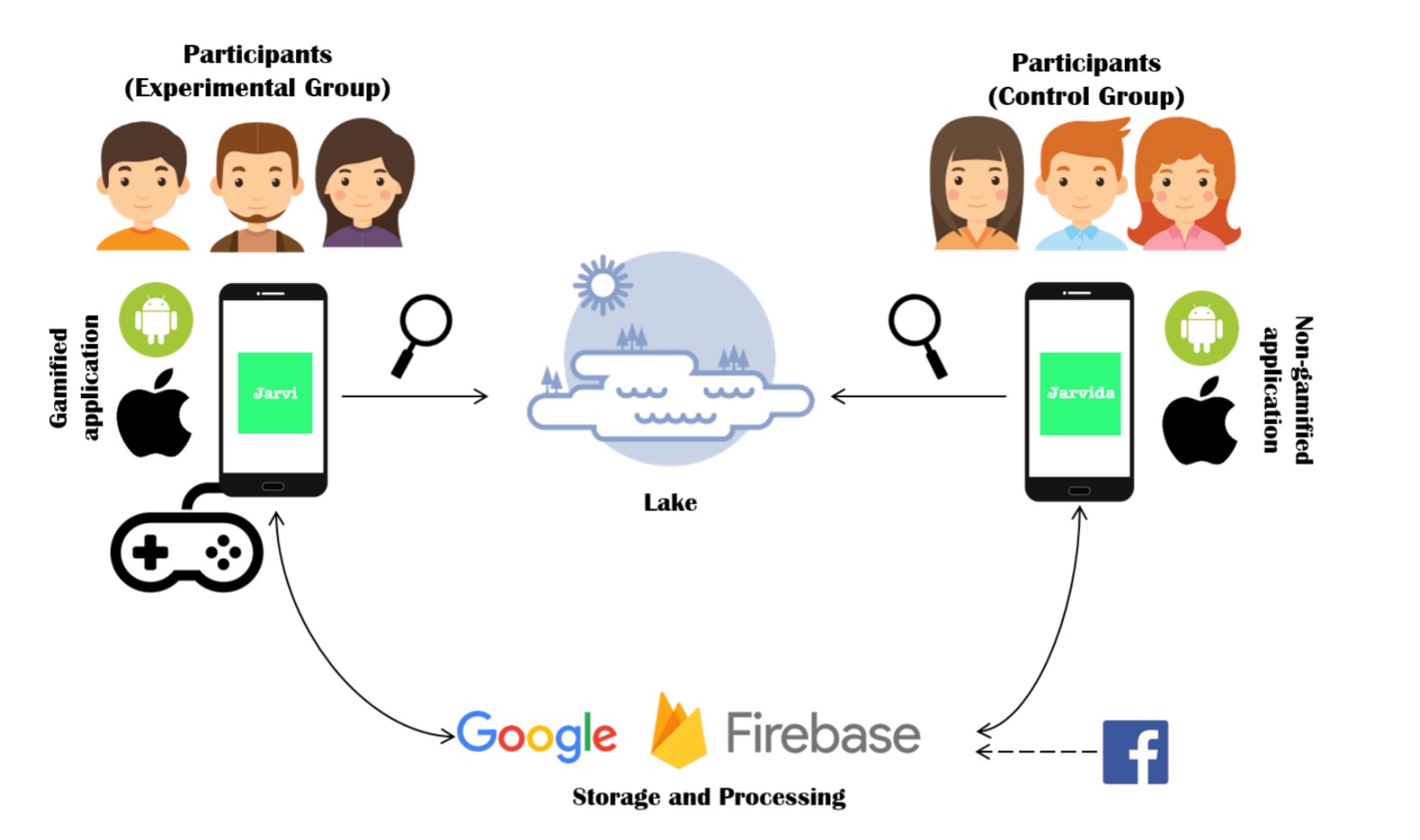Design Reflections for Gamification in Participatory Environmental Sensing
29 Apr 2018 · 2 min read Figure: System and Experiment Structure (Palancin-Silva et al., 2018)
Figure: System and Experiment Structure (Palancin-Silva et al., 2018)
Over the winter I had the privilege to participated in a pilot project initiated my colleague Palacin-Silva to investigate the impact of gamification on user engagement in environmental sensing. We used a participatory sensing approach where citizens actively participate in monitoring their environment. Participatory sensing can be said to be a type of civic technology in the sense that it empowers citizens to actively participate, instead of being passive recipients of environmental data. In this case the participants monitored the thickness of lake ice in Lappeenranta, Finland, where there was a pre-existing community. This community for example maintains their section of the Lake Wiki.
In our approach, we created two applications for monitoring lake ice thickness, one with gamification and one without to specifically evaluate the impact of gamification. The gamified application had a statistically significant effect on user effectiveness, as measured by the number of interactions and new data inputted by the user compared to the time the application was open. Both groups found the application as usable and as satisfying to use.
We published the following design reflections to consider when implementing gamification in participatory sensing:
- support personalized notification triggers;
- support customizable challenges to avoid negative feedback (e.g. discouragement) triggered from the lack of achievement;
- support social interaction between users;
- allow users to explore submitted data;
- enhance indoor experiences;
- support interactive feedback.
See more details about our recommendations in pg. 5 of the paper.
Read More
The paper is available at the ACM Digital Library and a preprint is available for request at ResearchGate.
What next?
In the upcoming, more advanced approach the civic engagement and civic technology aspects are deepened. In this upcoming SENSEI Project citizens are included in the co-design and co-creation. Again, all props to my colleague for initiating and leading the project.
Abstract
Participatory sensing (PS) and citizen science hold promises for a genuinely interactive and inclusive citizen engagement in meaningful and sustained collection of data about social and environmental phenomena. Yet the underlying motivations for public engagement in PS remain still unclear particularly regarding the role of gamification, for which HCI research findings are often inconclusive. This paper reports the findings of an experimental study specifically designed to further understand the effects of gamification on citizen engagement. Our study involved the development and implementation of two versions (gamified and non-gamified) of a mobile application designed to capture lake ice coverage data in the sub-arctic region. Emerging findings indicate a statistically significant effect of gamification on participants’ engagement levels in PS. The motivation, approach and results of our study are outlined and implications of the findings for future PS design are reflected.
Citation
Palacin-Silva, M. V., Knutas, A., Ferrario, M. A., Porras, J., Ikonen, J., & Chea, C. (2018). The Role of Gamification in Participatory Environmental Sensing: A Study In the Wild. In Proceedings of the 2018 CHI Conference on Human Factors in Computing Systems. ACM. (ACM DL)
Co-authors
- Maria V. Palacin-Silva
- Antti Knutas
- Maria Angela Ferrario
- Jari Porras
- Chandara Chea